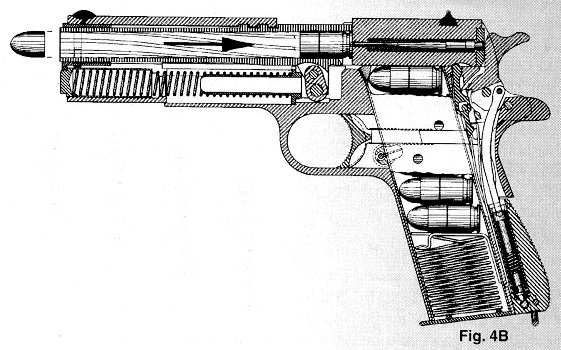This question pops up from time to time, and the explanations are as varied as both types of guns. For a long time, I stuck to the technical aspects, but not long ago…I spoke the simple truth…and a barroom brawl erupted almost immediately.
They’re ALL recoil operated. There are mechanical differences in the way they operate…but it all starts with recoil.
If we understand that recoil is no more than acceleration in the opposite direction, we can start to make sense of that statement.
The detractors start talking about physics…specifically Newton’s laws governing motion, inertia, and conservation of momentum/inertia…and in almost the same breath, they either ignore the basic physics, or they try to amend them…or suspend them…to suit their theories and/or beliefs.
Let’s start with Newton’s 1st Law. Inertia and conservation of momentum.
We first heard it put this way lo those many years ago in high school.
Simplified:
An object at rest will remain at rest unless an outside force compels it to move.
An object in motion will remain in motion unless an outside force compels it to stop.
Here, Mr. Newton was describing inertia and momentum, respectively.
Force is the operative word. No object in a constant state of motion will alter that state unless forced to.
When we fire a gun, we put an action/reaction event in play. Force forward and force backward. These forces will be equal in magnitude, but opposite in direction.
Whenever these forces are imposed on two interacting objects, one is driven forward and the other is driven backward. This is Newton’s 3rd Law of action and reaction.
And both those laws are in play, no matter what type of firearm that we pull the trigger on. The bullet is driven forward and the breechblock is driven backward. In a fixed-breech arm, like a revolver or a bolt-action rifle…or a Brown Bess smoothbore musket…the whole gun is driven backward….accelerated in the opposite direction.
So, call it what you will. Recoil operated…Blowback…Delayed Blowback…or Unicorn Fart Operated…it’s all the same. It all starts with force forward and force backward.
There also seems to be a prevailing belief that with the straight blowback…I prefer to think of it as Unlocked Breech Recoil Operated, but rarely say it out loud…the slide is blown open by pressure. While pressure and gas expansion provide the driving force…if a slide were to be blown open, unpleasant things would happen on the breech end, and the bullet wouldn’t likely make it to the muzzle.
In reality, the straight blowback slide moves only a short distance under pressure…delayed by its mass and the action/recoil spring…delayed in order to give the bullet time to exit and pressure to drop to or nearly atmospheric.
Once that happens, the breech can safely open. In much the same way as the Locked Breech Recoil Operated design…the slide makes full travel on its momentum…conserved during the brief instant that it was being accelerated by force backward.
The only real difference between the two is the method used to delay the slide and the opening of the breech. The blowback uses high slide mass and/or heavy action springs. The locked breech uses slide mass and the bullet’s drag on the barrel. The action spring has very little effect. This is why a locked breech pistol can be safely fired without a recoil/action spring…even the P08 Luger, which has little resistive mass to offer…and the blowback usually can’t.
So, regardless of the nomenclature…it’s all the same. It starts with a force driving two objects in opposite directions. Force forward and force backward. Action and reaction.
And it’s really just that simple.



I prefer the blowback than recoil. Great performance.